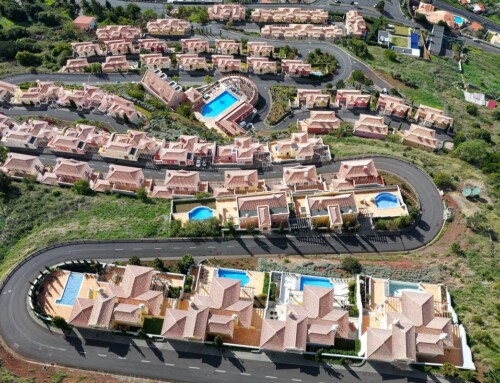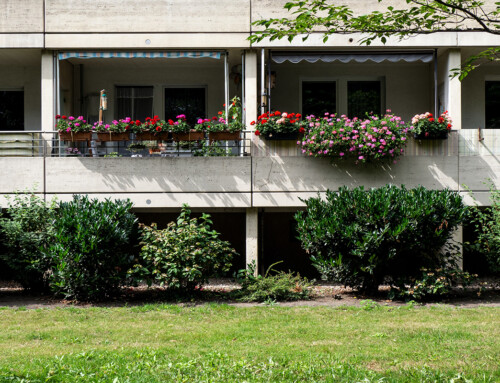The Early Days of Sectional Title
When Sectional Titles first came into being, the norm was to convert existing buildings from single ownership to sectional title ownership. This was done to give an opportunity to those who wanted to buy their own home but could not afford it or did not need a full title property. The concept was ground-breaking and totally changed the way that ownership of property was undertaken. Now there was a chance to own your own home at an affordable price instead of only being able to rent. In some parts of the country, it gave new life to the property market where, what are now called share block schemes, were in existence. Back then, these buildings were still owned as property of a company and ownership of shares gave the right of occupation in return for payment of a “levy” to cover costs.
At that time, there was no legislation controlling these “share-based” properties. As a result, there were some very clever ideas on the financing of new schemes by taking out bonds on properties where shareholders had occupation rights. The result was a pack of cards and many shareholders had to rebuy their units when these schemes collapsed. In Bloemfontein, Retco was able to buy up several share scheme buildings when they were attached. Zilwerland, Roqueford, Victoria House, Kellner Heights, and Five Ways were buildings involved before Retco changed their ownership to sectional title.
The new legislation allowed for title deeds to be issued which resulted in the ability for banks, and at that stage, Building Societies to issue bonds against this security. It being far easier to sell a property to a buyer on this basis, rather than selling shares which had to be paid for in cash (unless you were wealthy enough to get an overdraft at the bank). It made the marketing of these new fangle sectional title units so much easier than trying to find a buyer for shares and increased the value of these properties immensely.
Originally there was a scramble for the conversion of existing buildings as this was the best and quickest way to get sectional title properties into the market. After the initial reluctance by tenants, most tenants would take the opportunity to buy as the likelihood of the unit being sold to an occupier was very high, with most buildings sold over 90% to owner-occupiers. At that stage in the early 1980s, there were no purpose-built townhouses or flats. Tiny Barnetson of Ovcon from Pretoria and later Neville Schaffer of Trafalgar were the main players in the Bloemfontein market.
The first purpose-built townhouse was Pentagon Height in Pentagon Park, developed by Japie Ludick of Ludick Builders, a strong building company in the local market at that time. Japie is still a friend and lives in the Cape. The first high-rise building was Mike Moffat’s San Michelle on Hill St corner Alexander Ave. It was not a brand new building at that time as it had been rented for a year or two, but a modern well-constructed large flat building with low maintenance face brick finishes. I recall that the caretaker was fired because she could not be convinced that anyone would buy a sectional title flat.
In those days tenants had no rights. A developer could just give them notice to vacate or give them seven days to buy or not. The company that I was working for at that time and I, had arranged for the tenants to have about a six-week option to buy and most did. It was important to educate all the buyers from scratch as few, if any, had any real knowledge of how sectional titles worked. Unlike today, you did not buy your flat as is, but the price normally included painting and carpeting (to replace vinyl tiles).
At that stage it was very difficult to get a bond for the buyers as the amount of money that was available was controlled by the market, in that, interest rates were essentially fixed with the amount of money available for loans being limited to how much money was being invested by the Buildings Societies clients. It was quite necessary to frequently look to the grey money market where you would find willing investors who would take an extra percentage or so to be enticed to invest in a five-year fixed deposit. In return, the building society (we seldom used banks) would reserve the same amount as what the investor deposited against loans to your buyers. It would be quite hair-raising at times. Now the situation is that the money supply is near endless, all that happens is that interest rises and falls depending on demand. I can recall having to take the building society manager to lunch to encourage them to reserve some funds for our clients.
Body Corporate management was much the same as it is today because it is fairly obvious how these buildings should be run. Though it was not compulsory (or normal), we would always budget for a reserve fund; though in those days it would be based on a bulk amount and not specified for individual projects. Voting was definitely 1 hand per vote per unit. There was likely not to be a budget or budget-to-actual and everything was sent by post. Not just notices of meetings, I mean everything! Copies of correspondence that we kept in individual files were created using carbon paper on manual and later electronic typewriters. Word processors came in slowly and only in 1987 did we get one of the first computers in Bloemfontein—an XT model with a 40-megabyte hard drive! No Windows or mice in those days. Backups took hours using 750-kilobyte floppy drives.
Gradually many sectional title schemes were built and free-standing blocks of flats, with a few townhouse schemes. The main areas for developments were Willows, Westdene, and Langenhoven Park. In the first two, there was a demand for old houses that could be demolished and replaced with blocks of flats while in Langenhoven Park, this was an area developed by BANKOVS (Bank of Orange Free State) who bought the area from a developer who got caught up in the Sharpville massacre debacle which resulted in a massive slow down and vacancy factor in the early 1970s. The land owner who lived in a farmhouse complex that is now called The Grange used to fly his two sons by helicopter to school each day at Grey College. He was killed, along with one of his son’s doing aerobatics.
Langenhoven Park was developed by a number of builders including Vernon McKechnie who built and owned the Pick ‘n Pay Centre. He developed many of the properties in Micro Street including Princess Gardens, Knights Castle and Kings Court – boy did we get flak in the press for using those English names! The remaining three schemes that he built were named after wines – Chatel being one of them.
Around the same time, we expanded to do sales of converted buildings in Kimberley and sold Lyndale next to the fire station. Not a single owner bought during the six weeks option period. On the last day, I approached the first tenant who told me I was forcing him to buy. All the tenants were retired mine managers. The deal was done in the building’s office on the ground floor. In those days you could not do photocopies so one had to make three identical offers to purchase. When I had finished we opened the office door to find all the other tenants sitting in the passage, drinking tea, playing cards. What a busy day. I sold all but 2 of the 72 flats that day, only the two Rent Controlled tenants did not buy. The one was actually very wealthy but had given all his farms and money to his kids so that he could claim Rent Control status. He was an active member of the Kimberley Club and drove a brown Mk II Jaguar.
Sectional title has developed to what it is today; a system of property ownership that is vastly over-regulated and difficult to manage. Simply put, most trustees do not have the knowledge or skills to manage a property on their own and even managing agents find it difficult to abide by all the rules and regulations… but that is a story for another day.
Please note: The opinions expressed within the content are solely the author’s and do not reflect the opinions and beliefs of the website or its affiliates.
Please note: The opinions expressed within the content are solely the author’s and do not reflect the opinions and beliefs of the website or its affiliates.




